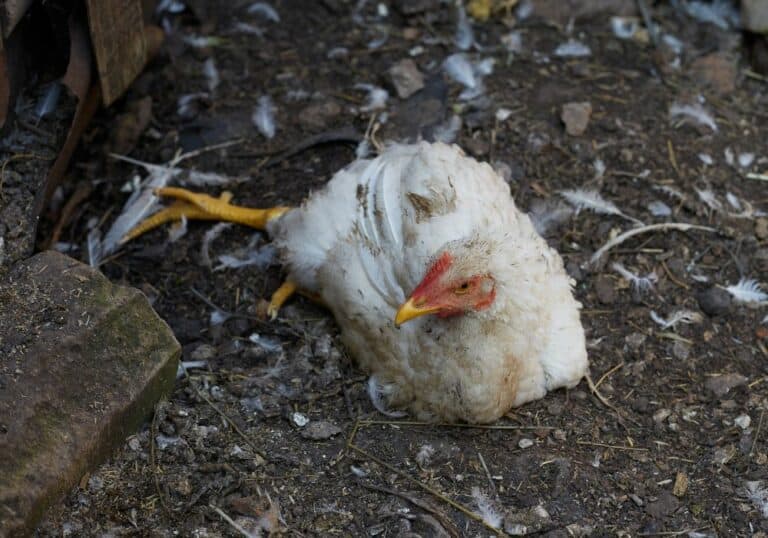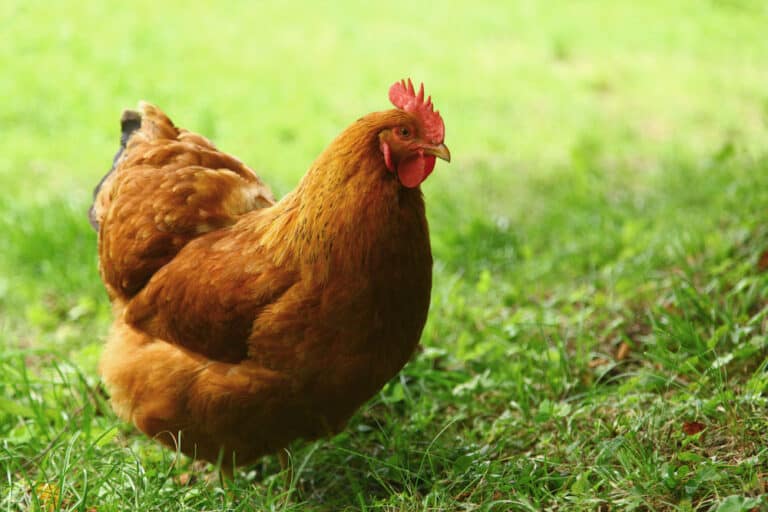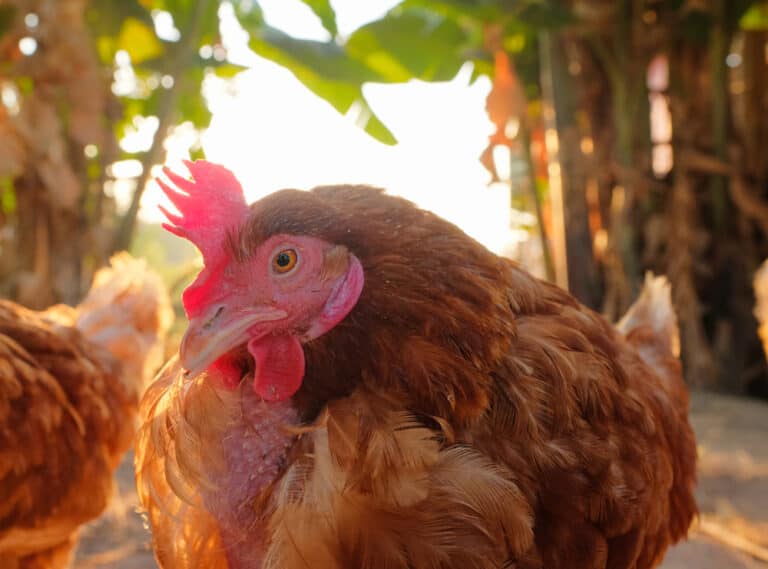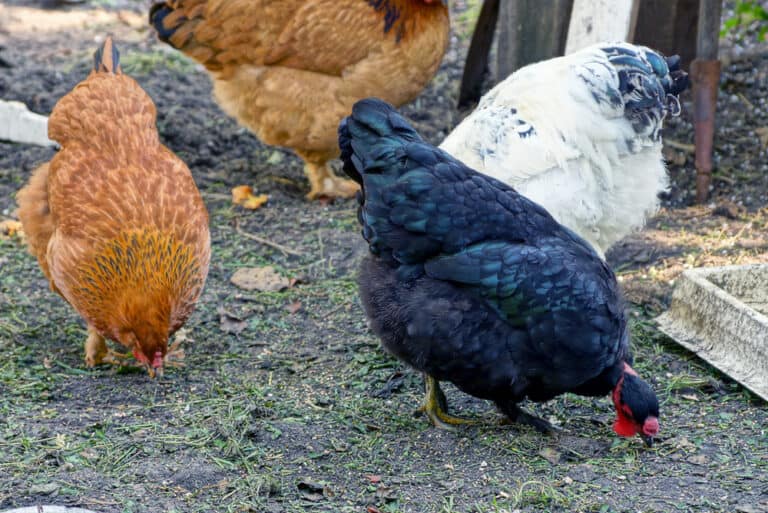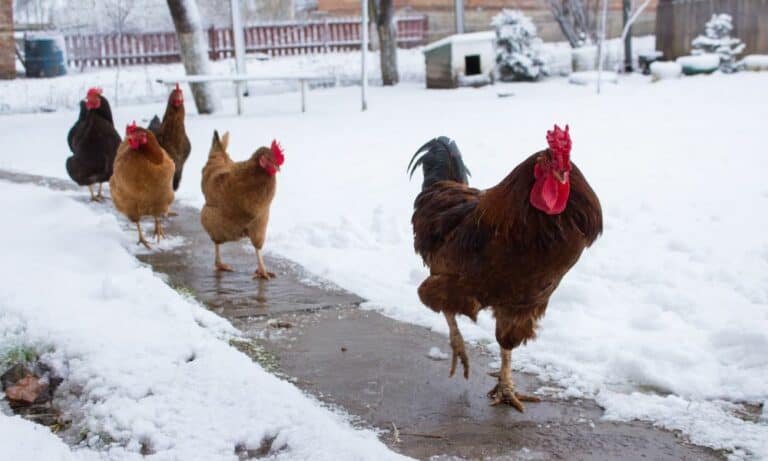The chicken comb is a bit of an odd structure we wouldn’t recognize on many other animals. Contrary to popular belief, roosters and hens both have variations of a chicken comb, and they serve the same general purpose.
There are 9 common types of chicken combs, and the type you see will vary depending on the chicken breeds and hybrids you come across.
Chicken combs do more than sit funnily on their face. In this guide, we explain why the combs are so important, how to identify different types of chicken combs, and how you can use them to diagnose issues in your flock.
The Importance of a Chicken Comb
Chicken combs benefit both you and your birds by:
- Serving as an indicator for general chicken health
- Indicating the chicken’s position in the pecking order
- Regulating your chicken’s body temperature
It may seem like a bit of a stretch, but the chicken comb can actually be a lifesaver (in more ways than one).
Indication of Health and Vitality
Most chicken combs are vibrantly colored and sit upright when the bird is in good health. Often, changes in comb appearance are the first sign that something is wrong.
The comb can also help you determine the age and overall health of chickens you may not be familiar with. For example, younger chickens may have smaller, light-colored combs. When a chicken ages past its prime, their comb may not stand as tall anymore (even if they’re in good health otherwise).
Status in the Pecking Order
While it’s not written in stone, chickens with larger combs are known to be more dominant and aggressive. Wattles and combs are commonly associated with traits such as strength and vitality, and chickens may recognize appearance in their pecking order.
Studies researching comb traits in chickens acknowledge that hens produce more eggs when housed with large-combed roosters and large-combed hens receive more sperm from dominant males.
While the comb has a functional role, it’s obvious that chickens view it as a sexual ornament of sorts and size influences mating preferences.
Regulation of Body Temperature
The more practical benefit of the chicken comb is how it helps them regulate body temperature.
Blood circulates through the comb, and the size and shape of the comb can either help the chicken conserve heat or get rid of it as needed.
For example, in higher temperatures the blood will circulate more quickly, allowing more time to shed the heat as it passes through the comb. Bigger combs work better for this, and you see them often on warmer-weather breeds.
Your cold-hardy breeds are more likely to have small, low-profile combs to help preserve body heat and prevent issues such as frostbite in the unfeathered area.
Types of Chicken Combs
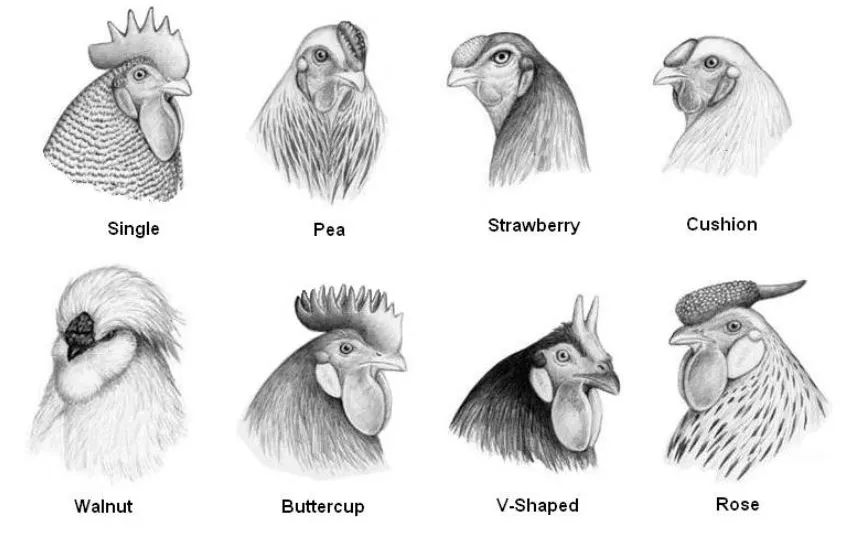
There are 9 types of combs:
- Single
- Buttercup
- Carnation
- Strawberry
- Cushion
- Pea
- Rose
- V or Devil’s Horn
- Walnut
The single comb is the most common seen on chickens in backyard flocks, but each cone type has a unique appearance and reason for how it looks.
1. Single Comb
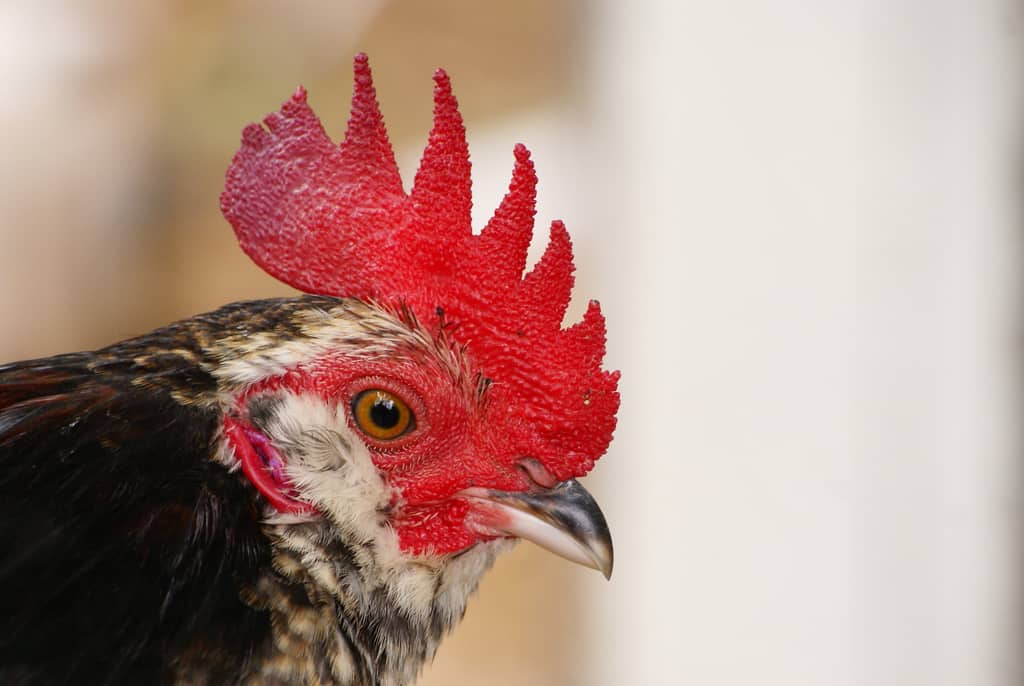
When you picture a generic chicken, you probably see a single comb on its head. This type of comb is thinner than other varieties, stands upright down the middle of their head, and has about 5 or 6 distinct peaks.
The spikes are usually taller in the middle and shorter at the front and back, and these combs are often red.
Breeds with a single comb include (but are not limited to):
- Barnevelders
- Faverolles
- Leghorns
- Rhode Island Reds
- Australorps
- Barred Rocks
- Cochins
- Delaware
- Minorcas
- Orpingtons
Ayam Cermani are another recognizable breed with a single comb, but theirs are black (of course).
2. Buttercup Comb
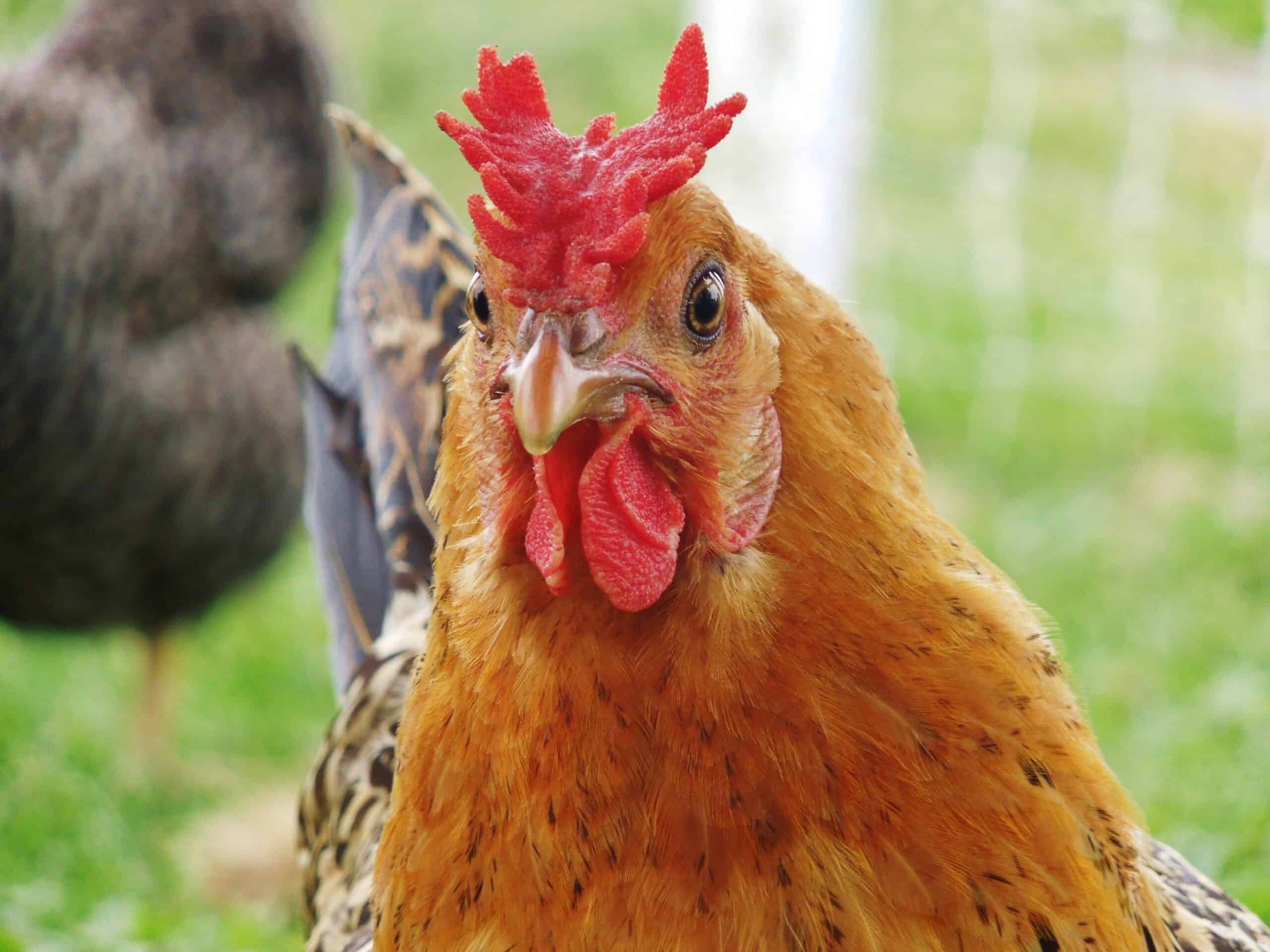
The buttercup comb looks like a combination of two single combs, and you only see them on Sicilian Buttercup chickens.
These combs form a full circle that resembles a crown atop the chicken’s head. This particular shape works well to dissipate heat and keep the chicken cool.
While roosters have a rather large comb, the buttercup comb on females is much smaller.
3. Carnation (King’s) Comb
Only two chicken breeds bear the carnation comb: the Empordanesa and the Penedesenca.
This comb appears similar to the single comb, but it has extra points towards the back that stick out at 90° angles. On the roosters, the combs will sit upright, but carnation combs on hens tend to droop to the side.
4. Strawberry Comb
Chickens with a strawberry comb look like they have a piece of fruit stuck to their face. As you may guess, it’s much flatter, thicker, and bumpier than the typical comb.
This odd-looking comb is mostly seen on Malays and hybrids of the breed.
5. Cushion Comb
Cushion combs are even smaller than the strawberry comb, making them ideal for colder climates. Unlike the strawberry comb, the cushion comb is smooth and works well for preserving body heat.
You see this type of comb on the Chantecler chicken, a dual purpose breed from Canada.
6. Pea Comb
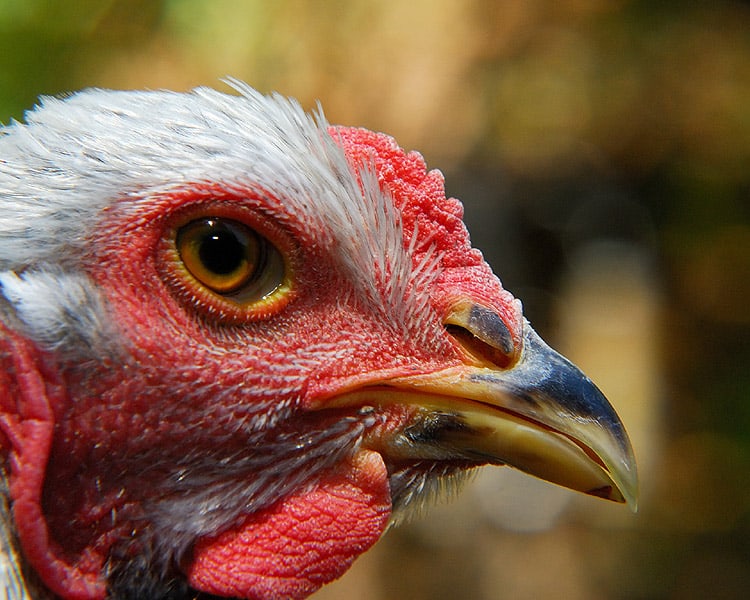
Pea combs range from small to medium sized. Like the strawberry comb, they sit low on the head, but they have 3 sections (with the middle sitting slightly taller than the rest).
This type of comb is great for colder climates, and you see it on breeds such as:
Because of its small size and flat profile, the pea comb is effective at preventing frostbite for these chickens.
7. Rose Comb
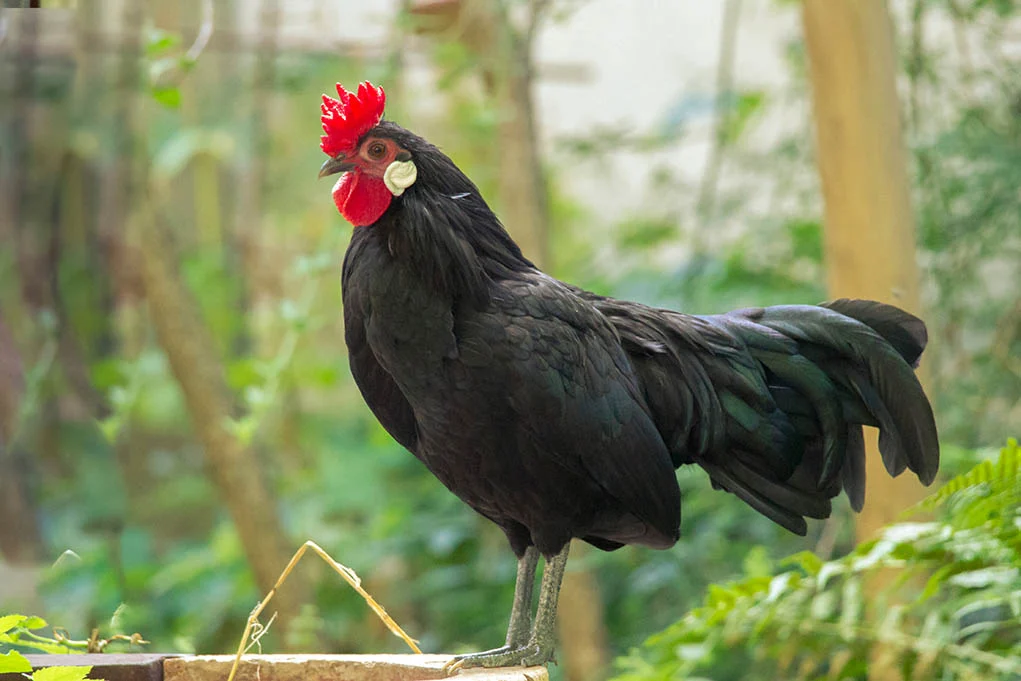
Rose combs are flat-yet-plump, and they cover the chicken from their beak to the back of their head. They finish off with a point, but sitting lower to the face makes them less susceptible to frostbite.
Breeds known for the rose comb include:
- Wyandottes
- Hamburgs
- Sebrights
- Red Caps
The size of the rose comb varies depending on breed and gender.
8. V (or Devil’s Horn) Comb
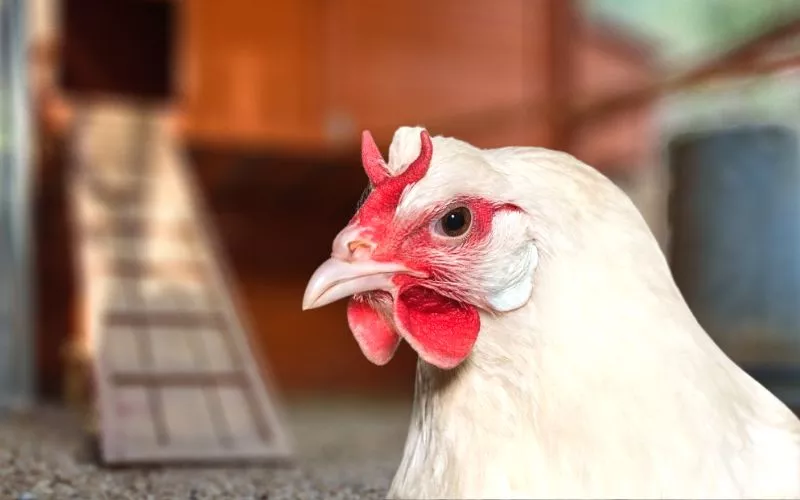
The V Comb is commonly known as the Devil’s comb because it looks like little devil horns coming off the chicken’s head.
This type of comb is easily distinguished from other types, but it’s rare and only seen in a few breeds like the French Crèvecœurs and La Flèches as well as the Turkish Sultans.
9. Walnut Comb
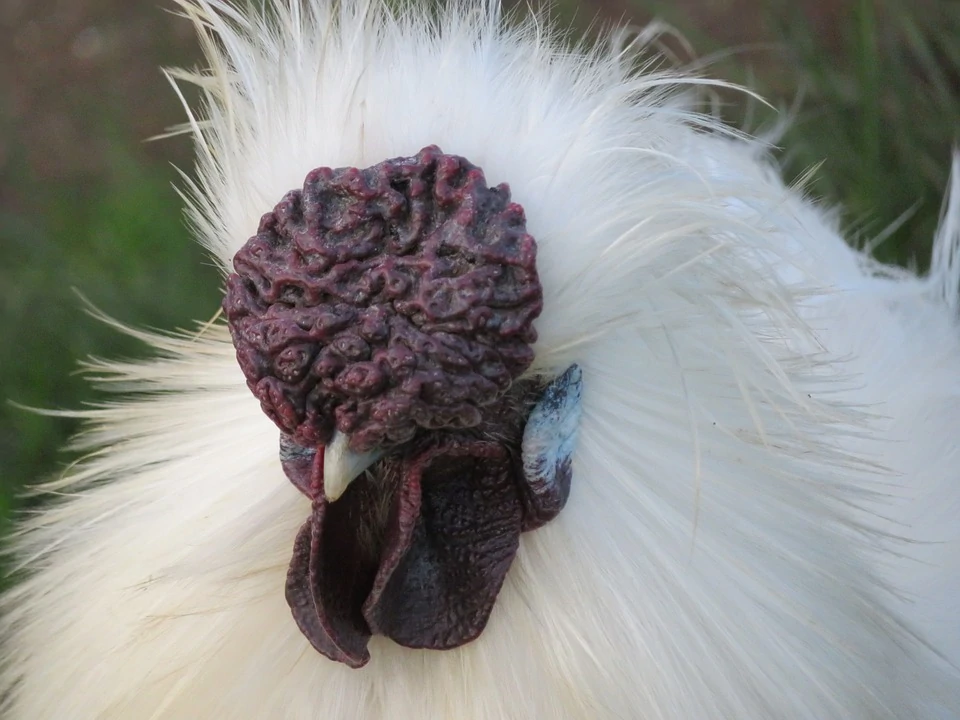
The final comb on the list looks like you cut a walnut in half, painted it, and stuck it to the top of your chicken’s head (hence the name). The Walnut Comb is round and low profile with several lumps and grooves.
Walnut combs are usually a medium size and they appear on breeds like Silkies, Yokohamas, and Orloffs. Most walnut combs are red, but some Silkies bear them in a deep purple color.
Common Chicken Comb Issues and Solutions
The color and state of your chicken’s comb is one of the first indicators of issues such as:
- Anemia
- Overheating
- Molting
- Intestinal worms
- Frostbite
- Fowl pox
- Avian influenza
- Bullying
By keeping a close eye on your chickens, you can be proactive in addressing these issues and increase your chance of successful treatment.
Pale Chicken Comb (Molting, Dehydration, Overheating, Anemia, Worms)
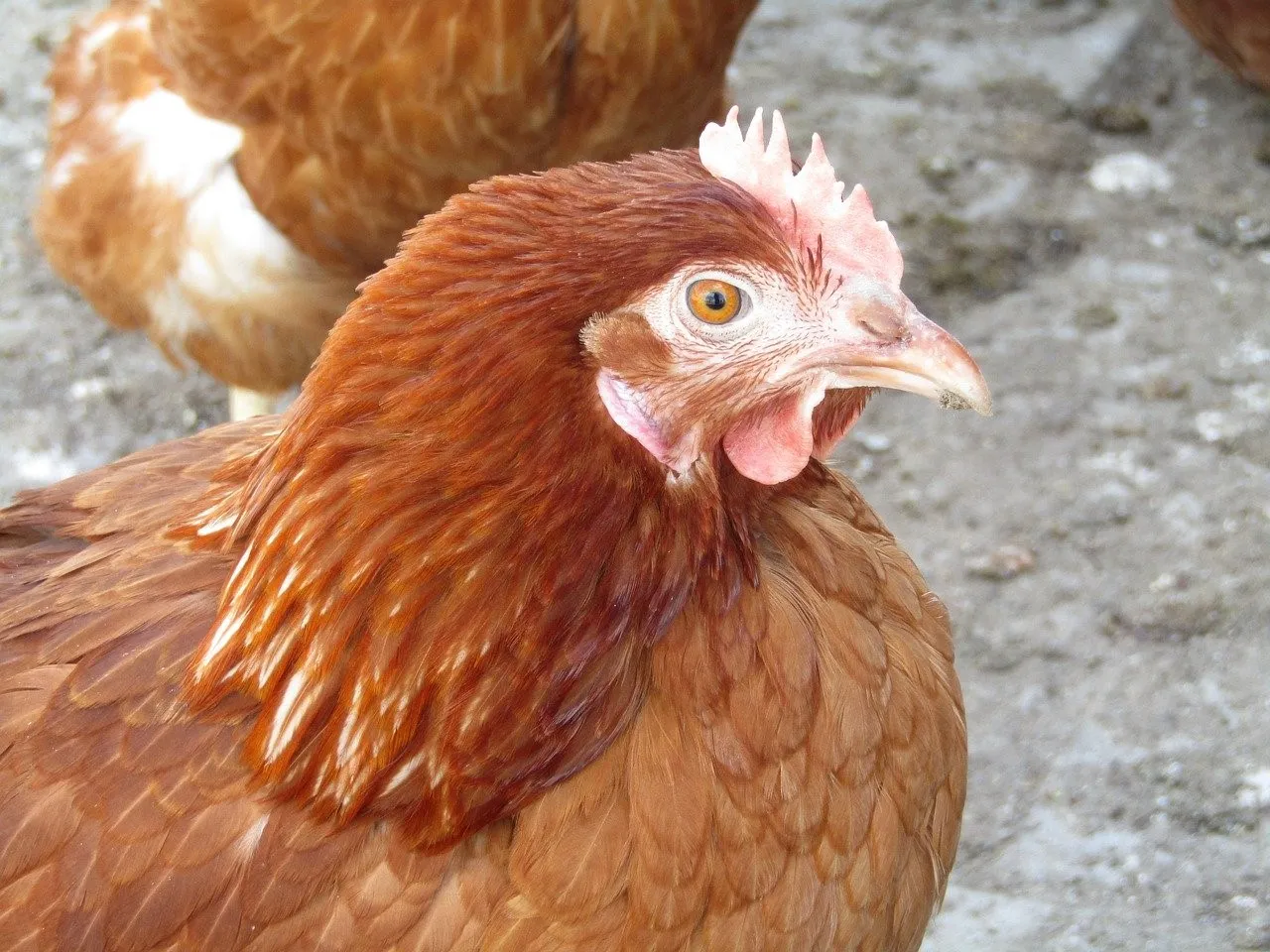
A healthy chicken comb has a bright color, while a pale comb may indicate issues such as overheating or dehydration, anemia, worms, or molting.
Molting is the easiest to rule out because it’s physically obvious whether your chicken is losing feathers or not. If this is the case, the comb should return to normal color once they are done.
Chickens that are overheating may need more shade and water. You may also introduce cooler foods, such as watermelon or iced corn, to help them keep their body temperature low.
Anemia is commonly caused by pests such as fleas, lice, or mites. Inspect your chicken for any unwanted hitchhikers, and then treat your flock and the spaces they inhabit accordingly.
Internal parasites can also cause anemia. Other key indicators include abnormal droppings (especially watery ones), worms in their eggs, and reduced egg production. Treat your flock with a proper dewormer to get your birds back to normal.
Black Spots on a Chicken Comb (Frostbite)
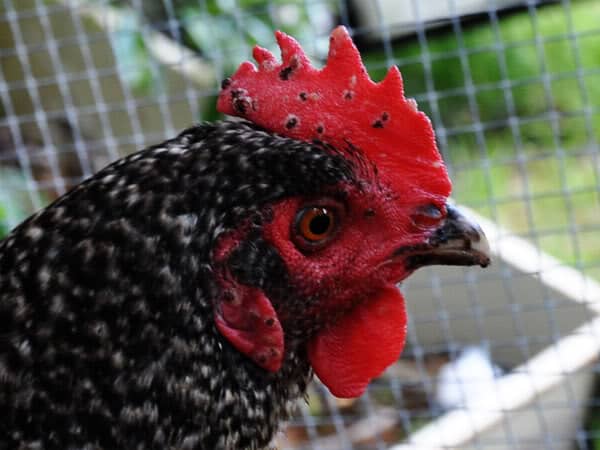
If you live in an area with extreme cold, high winds, and damp weather, your chickens run an increased risk of frostbite. Even areas that are normally mild may be struck from time to time, and it’s important to understand how to catch frostbite early on.
Frostbite occurs when blood flow to the area slows and the fluid under the skin is more likely to freeze. As the cells die, the affected area turns black.
You can prevent frostbite by covering their combs in vaseline, insulating and heating the coop, and ventilating the area to limit moisture buildup, but this does little to address an existing issue.
If you notice frostbite on your chicken’s comb, leave the dead skin there. This will help protect the healthy tissue in the future. You should also make your chicken an appointment to have the area evaluated by a professional, and keep an eye on it in case infection occurs.
Gray or White Lesions on a Chicken Comb (Fowl Pox)
Fowl pox is an extremely contagious viral infection, and you will only see signs of it on the featherless parts of your chickens. Beyond the gray or white lesions on their wattles, face, and comb, your chickens may lose weight, decrease egg production, and become lethargic.
Treatment for fowl pox takes a long time, often months or sometimes years, so you should address the issue as soon as possible. To prevent falling into this black hole of treatment, make sure you vaccinate your birds and consider planting insect-repelling plants to keep it from your home.
Blue Chicken Comb (Avian Influenza)
Chickens with avian influence experience respiratory issues, causing their comb to turn blue. You may also notice swelling in certain areas of the body, as well as reduced egg production or unusual eggs.
It’s important to treat avian influenza as quickly as you notice it to prevent it from spreading to the rest of your flock and becoming deadly. As long as you treat it right away, your chicken should make a full recovery with little fuss.
Injured Chicken Comb
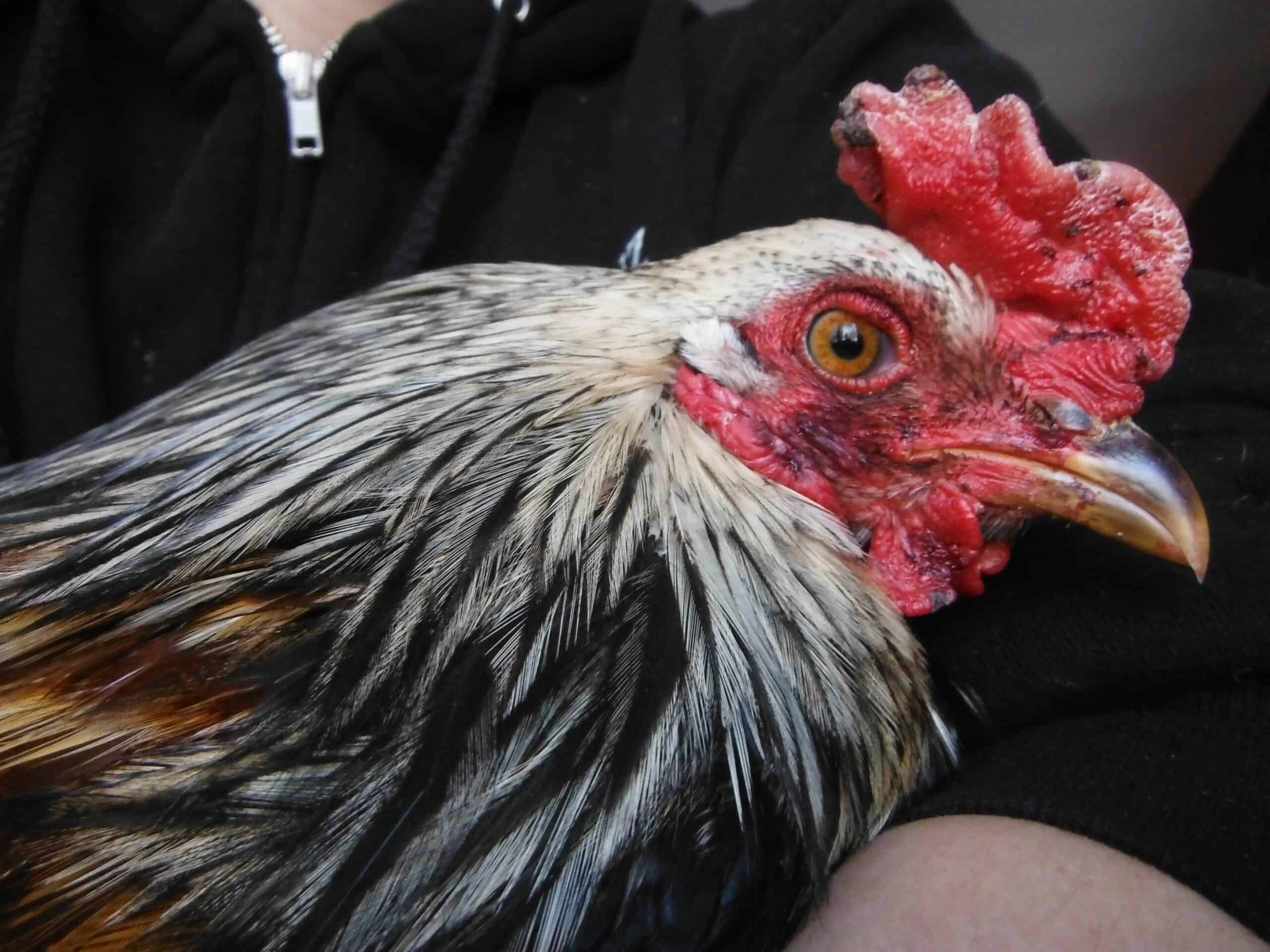
An injured chicken comb may occur if your chicken snags it on something in their enclosure, but it’s more likely they’re being bullied by someone in your flock.
Treat the wounds as soon as you notice them. Start by stopping the bleeding (if it’s still going), then handle smaller wounds with a simple saline rinse.
We suggest consulting your veterinarian to determine the best treatment for more serious injuries. They can prescribe the right medication to help them heal quickly and prevent infection. If the wound gets worse, your vet can also remove the dead or dying tissue to limit the impacts.
Follow up by figuring out who your bully is. You may need to provide more enrichment or space for your birds. If the issue keeps occurring between the same chickens, consider isolating them until the behavior changes. Extreme cases may require you to rehome one of the birds.
Conclusion
Chicken combs come in a variety of shapes and sizes, but they serve similar purposes. Often, you will see different breeds from similar areas sharing the same comb type.
Beyond appearance, remember that chicken combs are an effective tool in monitoring chicken health. A quick visual inspection of your flocks’ combes can prevent a major outbreak if you know what you’re looking for.
Use everything you’ve learned about chicken combs to more closely monitor your flock and act quickly if an issue pops up. If you’re unsure what the appearance of your chicken’s comb means, comment with your problem and we will do our best to help.

